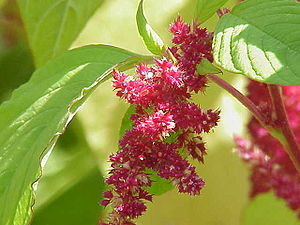Difference between revisions of "AY Honors/Edible Wild Plants/Amaranth/es"
From Pathfinder Wiki
< AY Honors | Edible Wild PlantsAY Honors/Edible Wild Plants/Amaranth/es
(Created page with "</noinclude>") |
(Created page with "EWP/es | name = Amaranto | image = Amaranthus tricolor0.jpg | description = Amaranto es un género cosmopolita de plantas perennes anuales o de corta duración. Cimas que pare...") |
||
| Line 3: | Line 3: | ||
{{ | {{ | ||
| − | EWP | + | EWP/es |
| − | | name = | + | | name = Amaranto |
| image = Amaranthus tricolor0.jpg | | image = Amaranthus tricolor0.jpg | ||
| − | | description = | + | | description = Amaranto es un género cosmopolita de plantas perennes anuales o de corta duración. Cimas que parecen como amento de flores densas crecen en verano u otoño. Aproximadamente 60 especies se reconocen, con inflorescencias y follaje que van desde púrpura y rojo a verde o dorado. |
Although several species are often considered weeds, people around the world value amaranths as leaf vegetables and cereals. | Although several species are often considered weeds, people around the world value amaranths as leaf vegetables and cereals. | ||
Revision as of 15:27, 1 June 2015

